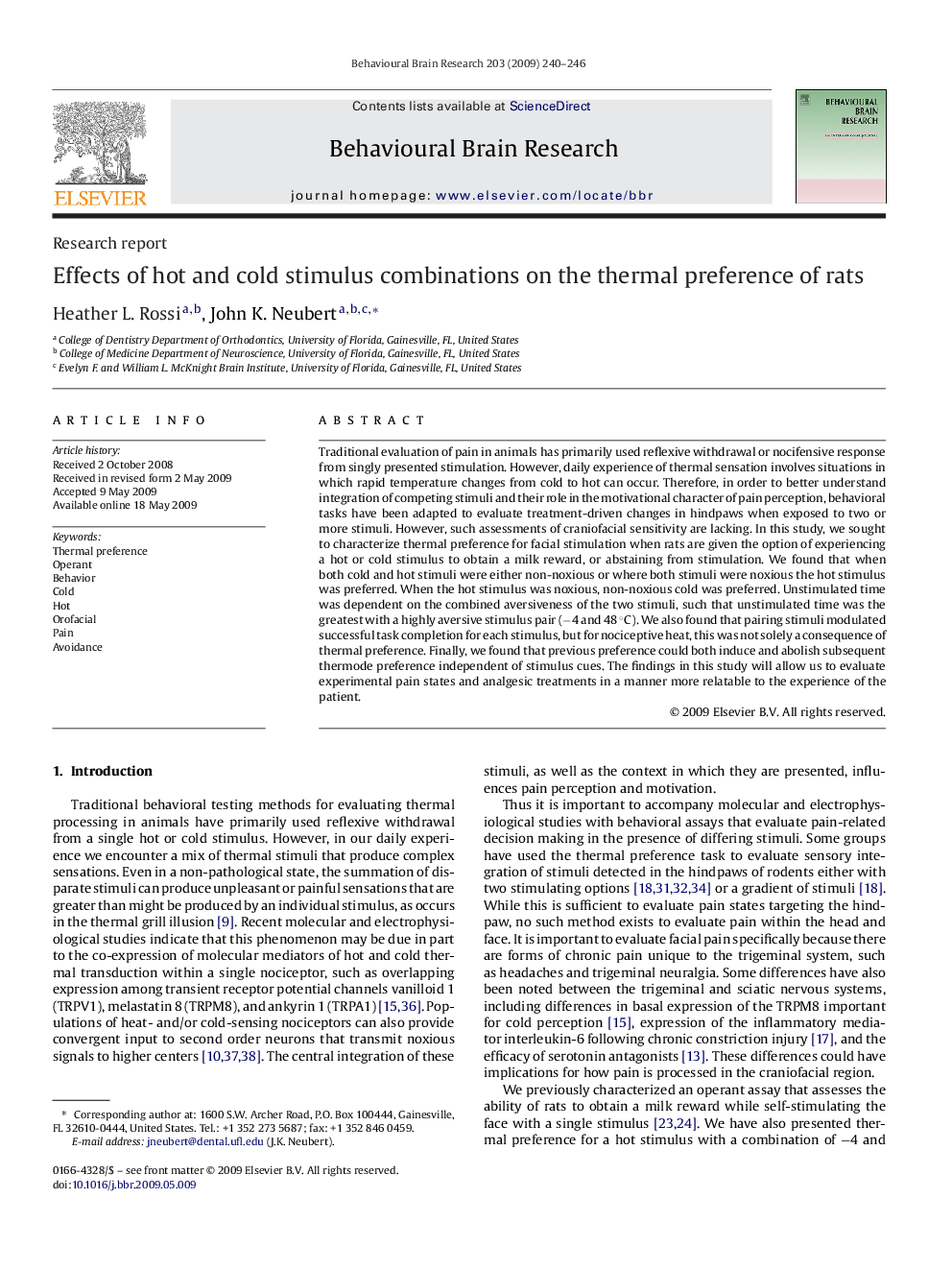| Article ID | Journal | Published Year | Pages | File Type |
|---|---|---|---|---|
| 4314663 | Behavioural Brain Research | 2009 | 7 Pages |
Traditional evaluation of pain in animals has primarily used reflexive withdrawal or nocifensive response from singly presented stimulation. However, daily experience of thermal sensation involves situations in which rapid temperature changes from cold to hot can occur. Therefore, in order to better understand integration of competing stimuli and their role in the motivational character of pain perception, behavioral tasks have been adapted to evaluate treatment-driven changes in hindpaws when exposed to two or more stimuli. However, such assessments of craniofacial sensitivity are lacking. In this study, we sought to characterize thermal preference for facial stimulation when rats are given the option of experiencing a hot or cold stimulus to obtain a milk reward, or abstaining from stimulation. We found that when both cold and hot stimuli were either non-noxious or where both stimuli were noxious the hot stimulus was preferred. When the hot stimulus was noxious, non-noxious cold was preferred. Unstimulated time was dependent on the combined aversiveness of the two stimuli, such that unstimulated time was the greatest with a highly aversive stimulus pair (−4 and 48 °C). We also found that pairing stimuli modulated successful task completion for each stimulus, but for nociceptive heat, this was not solely a consequence of thermal preference. Finally, we found that previous preference could both induce and abolish subsequent thermode preference independent of stimulus cues. The findings in this study will allow us to evaluate experimental pain states and analgesic treatments in a manner more relatable to the experience of the patient.
